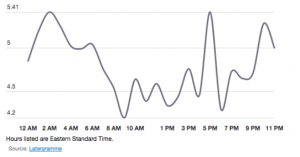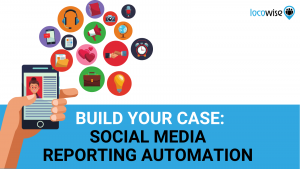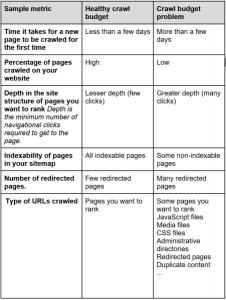
Have you ever wished you could clone your most effective leaders?
There’s a better way: Using competency models. Competency modeling is a way to clarify the skills and behaviors that are common denominators among your best performers so you can identify and develop those same leadership characteristics in others.
OnPoint has helped dozens of companies, including AmeriGas, GlaxoSmithKline and PepBoys, lay the groundwork for their leadership development programs using competency models.
If your company has never used competency models before, here are some best practices.
1. Determine How Competency Models Will Be Used
Before you can determine what type of models you need, it’s important to define the intended purpose. Will competency models be used to implement a shift in your strategy or organizational culture? To identify high potential employees or employees who are a good fit for a specific role? Will they be used as part of the performance management system, or in a less formal manner to ensure alignment across your organization?
2. Determine Whether To Use An Existing Model or Start Fresh
Your competency model can be based on an existing model and adapted to fit your needs, or you can develop a unique model for your organization which can require several weeks or months of interviews, observation and data collection.
Developing a competency model from scratch is more time-consuming, but it may be necessary depending on how you plan to use it. Basing it on an existing model may save time but could involve licensing fees and there may be constraints on the extent to which it can be customized to meet your needs. One way to address both these limitations is to work with a third party that has a library of competencies and/or has the experience and time to lead the development of a new model.
3. Conduct Interviews to Clarify Strategy and Success Factors
To be effective, competency models must reflect your company’s desired culture and support the achievement of its strategic goals. They must include the characteristics and behaviors your organization considers to be most critical to success. To identify these behaviors and characteristics, you’ll need to have conversations with people at all levels of leadership and at all levels of performance.
Start by identifying leaders whom your organization considers to be exceptional and leaders who meet expectations. Ask those in each group what skills and behaviors they believe are most important to success in their role. For instance, being “team oriented” should include specific, observable behaviors such as maintaining open and honest communication, demonstrating a willingness to listen to others’ ideas and providing team members with the resources and support they need to complete a project.
4. Develop an Interim Model Based On Findings
Next, review your findings. Map out a draft of the common characteristics and behaviors that appear to be most important to the success of your top performers and that differentiate them from the average performers. At this point in the process, you may find you have a list of 15-20 characteristics and will need to narrow it down during the next phase of development. Best practice recommends having 7-9 competencies, with 6-8 behaviors associated with each one. That number is robust enough to make your model a useful tool but short enough for people to remember and effectively use it in human resource management systems.
5. Review the Draft Model With Key Stakeholders
Ask the leadership team and incumbents to give feedback on the draft model and help narrow down the number of competencies and behavior items. A few questions we typically ask include:
- Do you believe these competencies are relevant and important, given our current needs and future goals?
- Are they defined by behaviors we can observe and measure?
- Will we be able to integrate them into our existing systems for hiring, promoting and evaluating leaders?
While it’s important to have input from leaders at the top, it’s just as critical to seek feedback from other leaders and employees throughout the process. Make time to discuss the draft model during company meetings, or ask department leaders to discuss them with their teams and provide comments.
We’ve found employees are much more likely to buy into and use a competency model if they’ve been involved in creating it.
6. Conduct Research To Validate the Model
For many companies, “face validity” (getting consensus among key stakeholders that the competency model includes the behaviors and skills that are critical to success) is enough to provide you with assurance that you’re moving in the right direction. Some companies, however, may want to take this a step further and validate their models in a more objective way. Validation is useful when you are using the model for identifying high potential employees and succession planning or if you plan to use it as the basis for evaluating performance. It will ensure you are focused on skills and behaviors that truly predict success.
To validate your model, you can use 360 surveys to collect feedback from your leaders’ peers, managers and direct reports on their use of the behaviors described in the competency model and cross-reference that with data on their performance. Using this approach, you can determine the extent to which the competencies differentiate your top performers and make recommendations to refine or adjust the model as needed.
Updating Outdated Competency Models
If your company already has a competency model, it may be time to consider updating your existing models. In that case, you can collect feedback from your employees on the existing model to determine which competencies are still relevant and which ones need to be updated. You will also need to clarify your desired goals and determine what competencies will be necessary to achieve them.
In some cases, although you’ve identified the right competencies, they may not go far enough to define specific behaviors or give examples of exceptional, good and poor performance.
Competency models set the foundation for a strong succession management program. They shape the way you hire, promote and develop future leaders, so it’s critical to get them right from the beginning. However, developing and validating them can be a substantial undertaking. It requires time, effort and expertise that even large global companies may not have in-house.
If you want to ensure you continue to promote your best performers to leadership roles by developing or updating competency models, contact us to talk about how we can help.
Business & Finance Articles on Business 2 Community
(63)




